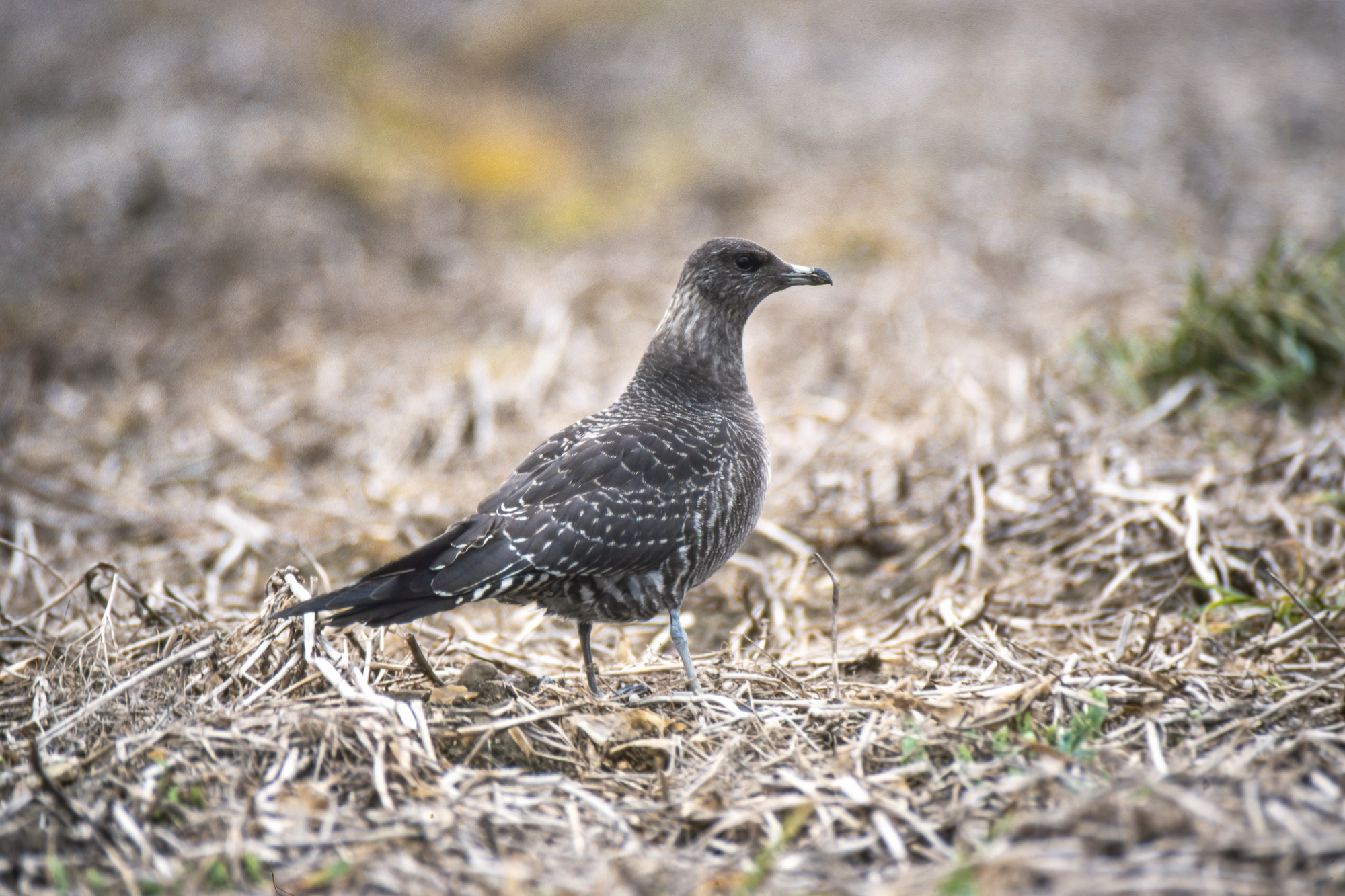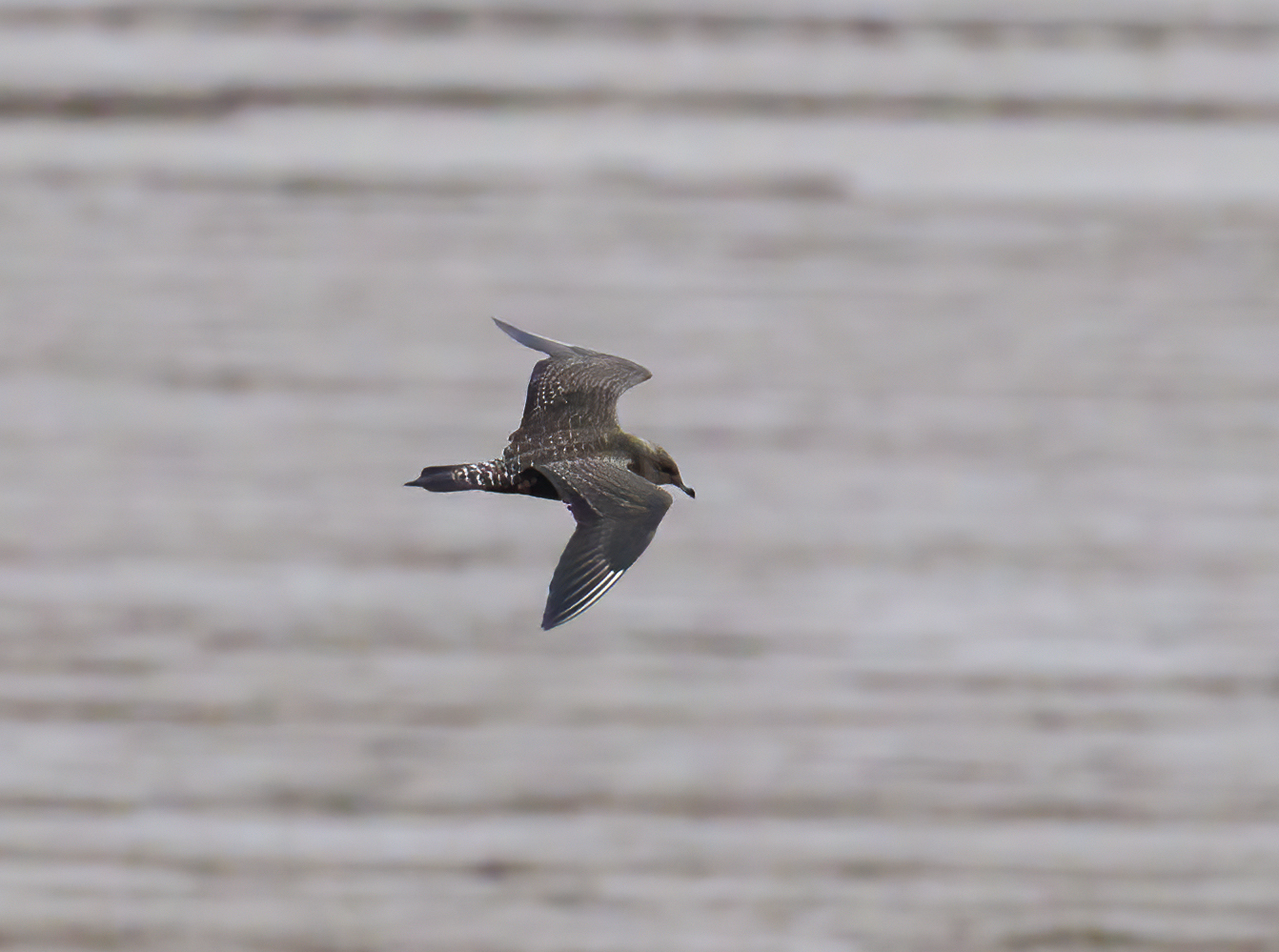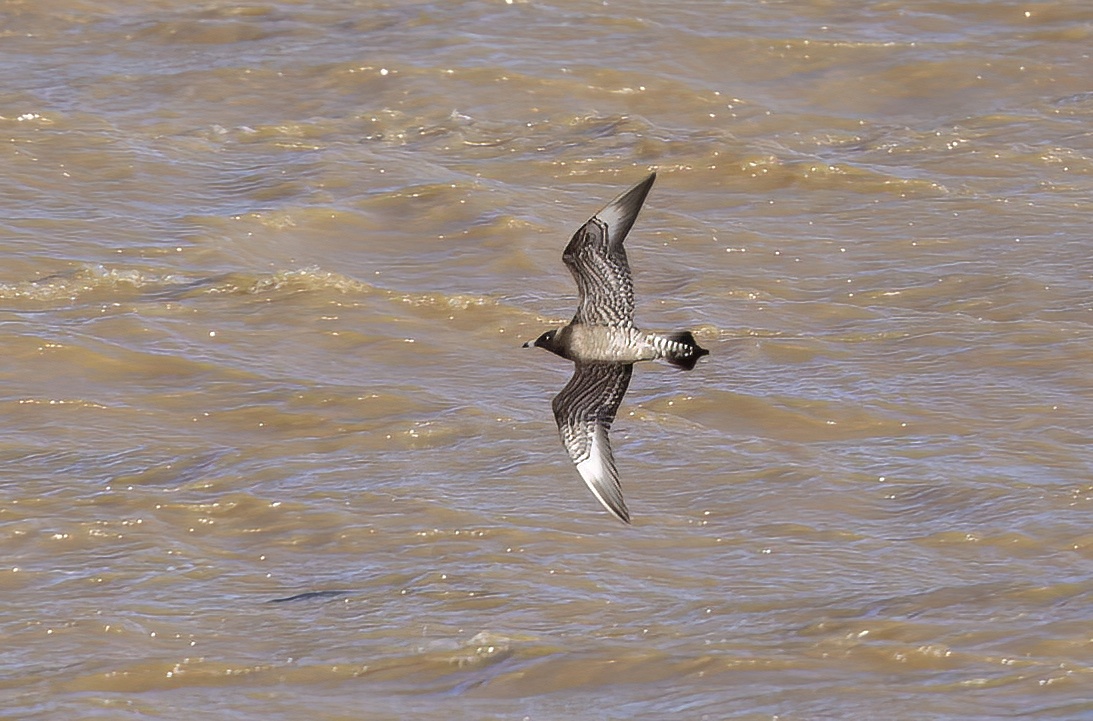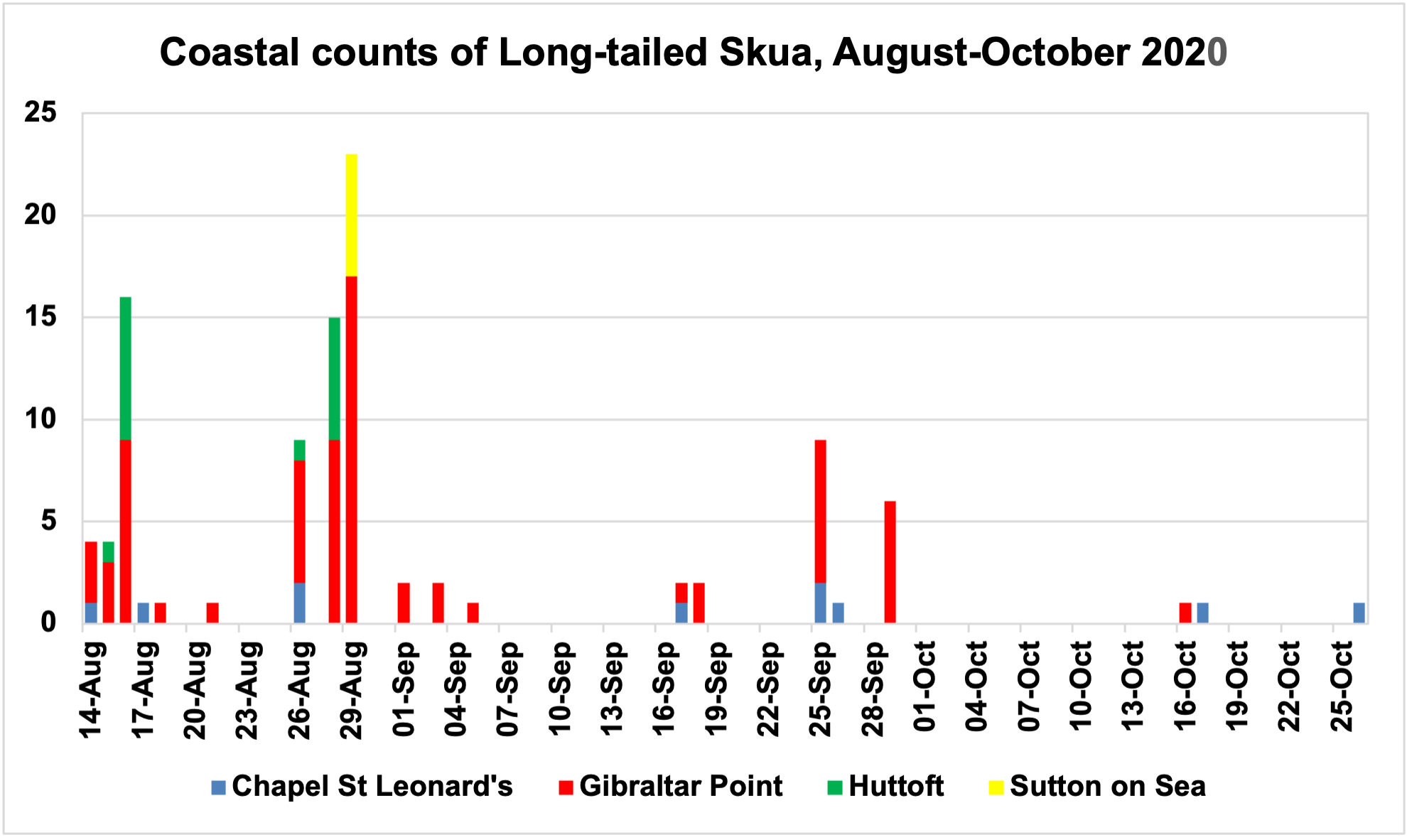Long-tailed Skua Stercorarius longicaudus



Long-tailed Skua was considered as a BBRC rarity up until 1979. The nearest breeding grounds are Arctic Scandinavia and spring passage primarily occurs off the west coast of Britain and especially the Outer Hebrides; it is unknown off the Lincolnshire coast in spring. The Atlas reported two particularly good autumn passage years in Lincolnshire in 1988 (see the article below) and 1991 when more than 60 birds were recorded. Interestingly, compared to the other skuas it has a narrow window of occurrence in Lincolnshire and in the 10 years to 2019 no records at all were received for the period December-July. A spring-plumaged adult would be a welcome sight in the county! Extreme dates were from August 13th to November 21st with the bulk of passage occurring in August-October. The total numbers of birds per annum during the 10 year periuod 2010-2019 ranged from a low of five in 2019 to 47 in 2013, with an average of about 16 birds per annum. The highest day counts by site were of seven at both Gibraltar Point and Huttoft Bank on September 10th, 2013; six at Gibraltar Point on September 13th, 2017 and at Witham Mouth on October 13th, 2013; and five at Sandilands on August 30th, 2013. Very recently though on August 29th, 2020 in a big Long-tailed Skua passage, Gibraltar Point had a day count of 19 birds, smashing all recent records.

Exceptional numbers of Long-tailed Skuas in Lincolnshire in 1988
by G. P. Catley
Note: This account is based on the article which first appeared in Lincolnshire Bird Report, 1988.
The Long-tailed Skua Stercorarius longicaudus has always been a great rarity in Lincolnshire with a total of around 87 records (excluding ‘at sea’ records from Inner Dowsing tower), to the end of 1987, 67 of which were recorded during 1970-1987. Many factors are involved in this generally low total for an east coast county, including the generally unproductive seawatching on our gently shelving coast; the lack of good, raised observation points and headlands; the lack of any systematic seawatching at coastal localities; and the general lack of experience in identifying all but the closest of skuas in the best conditions amongst the majority of observers.
Adults are not too difficult to identify in close views, but distant birds can cause problems and only the most experienced observers are likely to identify juveniles in anything but the closest views. Analysis of age structure of past records of 55 out of 67 birds in the Lincolnshire Bird Report, 1970-1987, where age was specified revealed that 29 were adults and 26 juveniles. Long-tails, like Pomarine Skuas, are known to be heavily dependent upon the population of Lemmings in their breeding areas, with the most successful breeding, and hence highest numbers, following the 3-4 year Lemming cycle. There were on average 1-4 records per annum during 1970-87 with peaks of 13 in 1976, 10 in 1979 and 12 in 1985; note that in 1982 high numbers were noted at other east coast watch points.
Thus, the high numbers in 1988 followed the seemingly regular three-year pattern but the actual scale of the influx was unprecedented. There was a minimum of 67 birds recorded, August 20th-October 12th. This equals the combined record total for the previous 18 years and was part of a huge passage around all of the British coasts which looks set to total 1000+ records. The Lincolnshire total was made up largely from restricted seawatches of 1-5 hr. with only one all-day watch of 10 hr. at Huttoft on September 24th and no seawatching was done on many of the autumn days. At Flamborough Head, where systematic seawatching is carried out on most days during the autumn there was a total of 374 Long-tailed Skuas recorded, August 2nd-November 3rd (P. A. Lassey pers comm.). Peak days on the Lincolnshire coast mirrored those at Flamborough:
| Date | Lincolnshire | Flamborough |
| September 24th | 18 | 32 |
| September 29th | 9 | 43 |
| October 1st | 5 | 33 |
| October 2nd | 13 | 15 |
| October 11th | 6 | 6 |
Other peak days at Flamborough were September 23rd (41), 25th (12) and 30th (30); October 8th (25), 18th (22) and 30th (16). No seawatching records were available for those dates in Lincolnshire, and what might have been, given some systematic seawatching in the county, is impossible to say but it may have trebled or quadrupled the Lincolnshire total.
Of the 67 birds logged in 1988, 43 (64%) were adults, 24 (36%) were juveniles; no immatures were identified. A similar ratio occurred at Flamborough with 58% of those seen to October 15th being adult, and the pattern of a very high proportion of adults amongst those recorded was the same around the whole coastline of Britain.
Juveniles occur in three broad phases – pale, intermediate, and dark – although all adults are pale phase (Harrison 1983, Malling Olsen 1989). Pale phase birds are quite scarce and most identified are intermediate phase, with a perhaps under-recorded number of dark birds. The only juveniles noted by colour phase in Lincolnshire in 1988 were the 17 in the table, of which 13 were intermediate and four dark. Identification of the smaller skuas has recently been the subject of a useful paper in British Birds (Malling Olsen 1989).
| Date | Site | Count | Notes |
| August 20th | Huttoft | 2 | Adult & juvenile |
| September 13th | Chapel Point | 1 | Juvenile south |
| September 14th | Witham Mouth | 1 | Juvenile |
| September 14th | Huttoft | 1 | Dark juvenile |
| September 24th | Gibraltar Point | 1 | Adult |
| September 24th | Huttoft | 17 | 10 adults, 6 intermediate juveniles, 1 dark juvenile |
| September 26th | New Holland | 1 | Intermediate juvenile |
| September 27th | Chapel Point | 1 | Adult |
| September 29th | Huttoft | 9 | 8 adults, 1 juvenile |
| October 1st | Huttoft | 5 | 5 adults south |
| October 2nd | Saltfleetby | 3 | 3 adults |
| October 2nd | Donna Nook | 1 | Dark juvenile south |
| October 2nd | Mablethorpe | 9 | 3 adults, 5 intermediate juveniles, 1 dark juvenile (pm) |
| October 4th | Saltfleetby | 1 | Adult |
| October 4th | Huttoft | 4 | 3 adults, 1 juvenile |
| October 5th | Huttoft | 3 | 2 adults, 1 intermediate juvenile |
| October 8th | Huttoft | 1 | Juvenile |
| October 11th | Huttoft | 6 | 2 adults, 4 juveniles |
| October 12th | Huttoft | 2 | 2 adults |
References
Harrison, P. (1983). Seabirds: an identification guide. Croom Helm.
Malling Olsen, K. and Jonsson, L. (1989). Field identification of the smaller skuas. British Birds 82 (4): 143-176
(Account as per new Birds of Lincolnshire (2021), included September 2022; 1988 article added June 2023)

